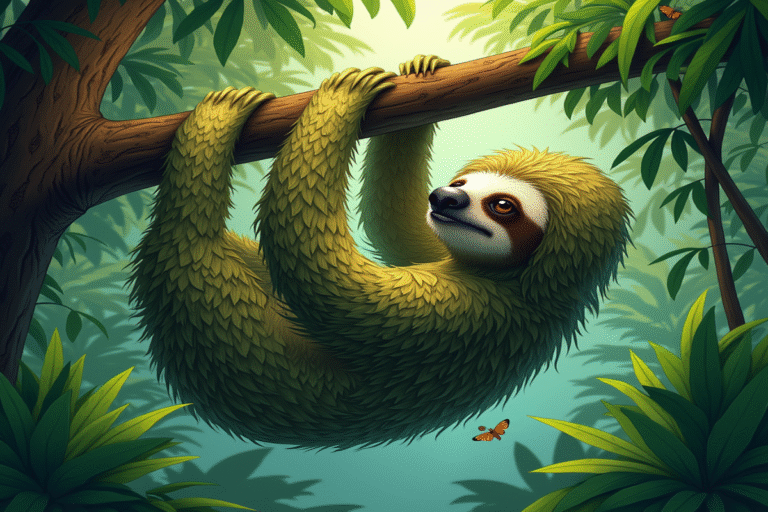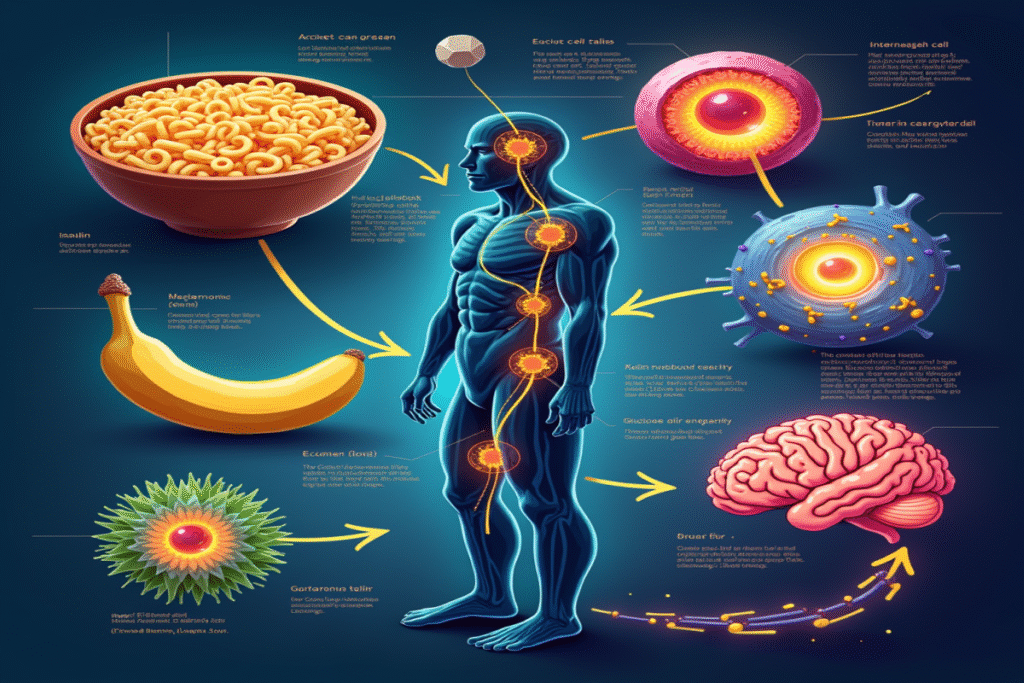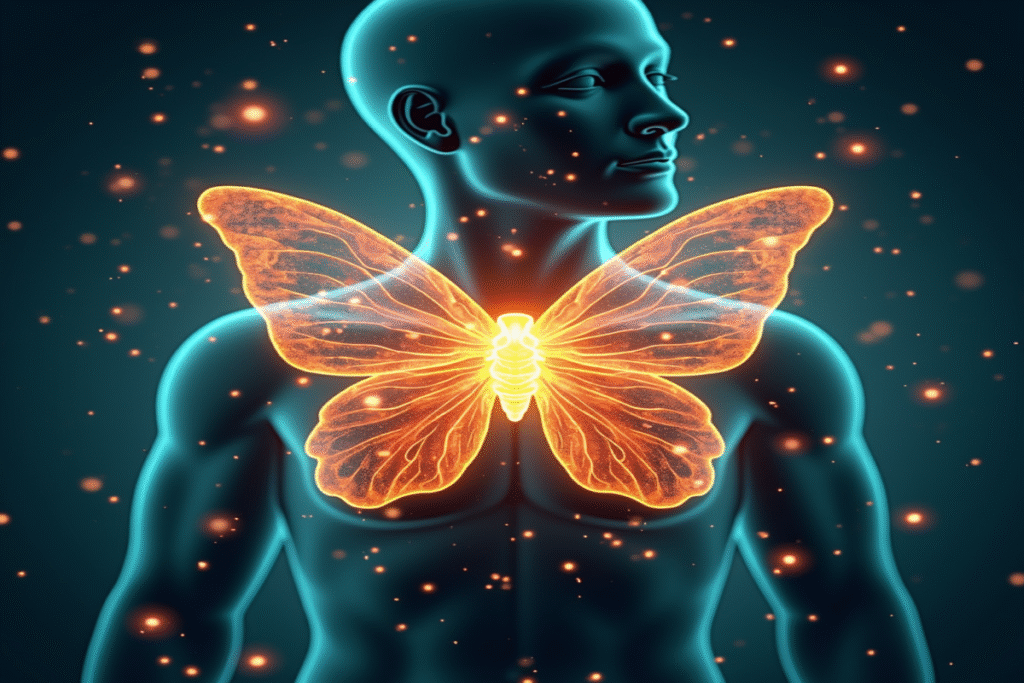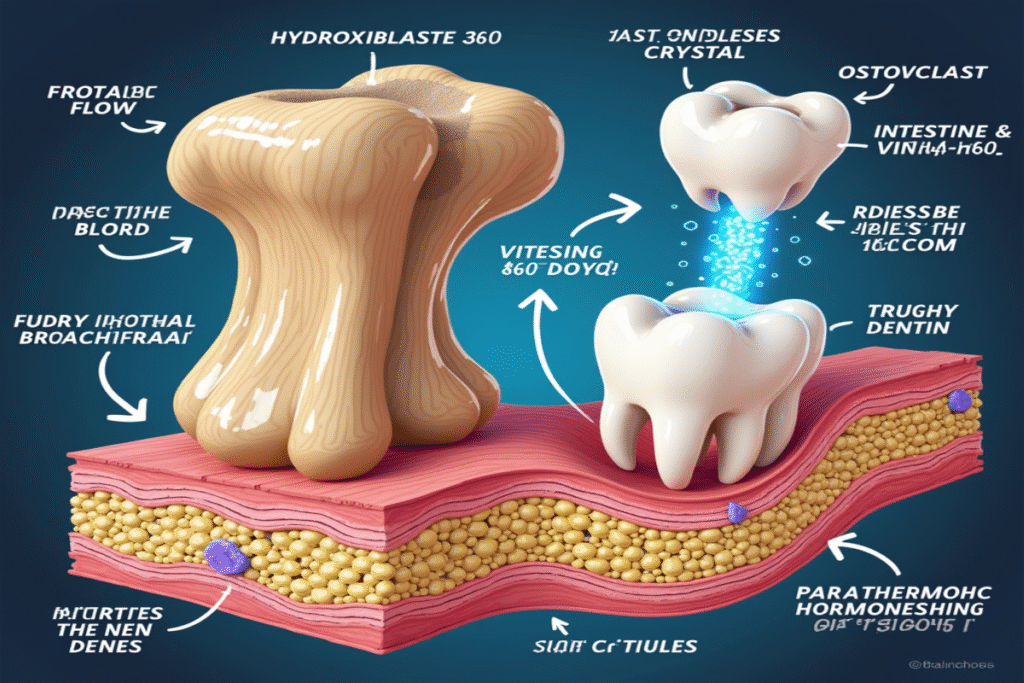Deep in the canopies of Central and South American rainforests, one of nature’s most fascinating symbiotic relationships unfolds. Sloths, those famously slow-moving mammals, harbor entire ecosystems in their fur—with algae being the star resident. But this isn’t just a random occurrence; it’s a sophisticated survival strategy millions of years in the making.
The perfect living environment for algae
Sloth fur is uniquely structured to become a thriving habitat for algae. Unlike most mammals, sloth hair has grooves running along the length of each strand, creating ideal pockets for algae spores to settle. Their fur absorbs water like a sponge, keeping the moisture algae need to flourish.
This special hair structure, combined with the sloth’s remarkably slow movement (they travel less than 40 meters per day), creates perfect conditions for algae to grow. Because sloths rarely move, their fur doesn’t get much airflow, keeping it humid and ideal for algae.
The science of sloth camouflage
The main algae found on sloths belong to the genus Trichophilus, which gives their fur a greenish tint. This coloration provides remarkable camouflage in the dappled green light of the rainforest canopy.
Research shows that predators like harpy eagles and jaguars, which depend on sight to hunt, often pass by sloths without noticing them. The algae turns the sloth’s brown fur into a mottled green-brown pattern that helps them blend in with tree branches and leaves.
A relationship with multiple benefits
The algae-sloth relationship offers several advantages:
- Nutritional supplement: Studies indicate that sloths sometimes lick the nutrient-rich algae from their fur during grooming, gaining extra nutrients.
- Temperature regulation: The algae layer may help sloths insulate themselves, assisting with their limited ability to regulate body temperature.
- Ecosystem support: The algae attract moths that live only in sloth fur. These moths lay eggs in the sloth’s dung, providing nitrogen that helps more algae grow—a complete micro-ecosystem.
An evolutionary masterpiece
What makes this relationship even more fascinating is how the sloth’s entire physiology supports it. Their strong muscles let them hang upside down for long periods, their metabolism operates at just 40-45% of what would be expected for their size, and they descend from trees only once a week to defecate—all traits that help maintain their algal gardens.
Scientists believe this partnership has evolved over millions of years, with genetic evidence suggesting that certain algae species have co-evolved exclusively with sloths.
Beyond camouflage: A complex ecological web
When a sloth climbs down to the forest floor to defecate—a risky weekly trip—moths living in their fur lay eggs in the dung. These eggs hatch into moths that find a new sloth host, carrying algal spores with them. This completes a unique ecological cycle connecting the canopy to the forest floor.
This elaborate relationship shows how evolution can create sophisticated survival strategies where many species benefit from their interactions. The next time you see a sloth’s green-tinged fur, remember you’re seeing not neglect, but one of nature’s most ingenious camouflage systems—a living disguise that has helped sloths survive for over 60 million years.





